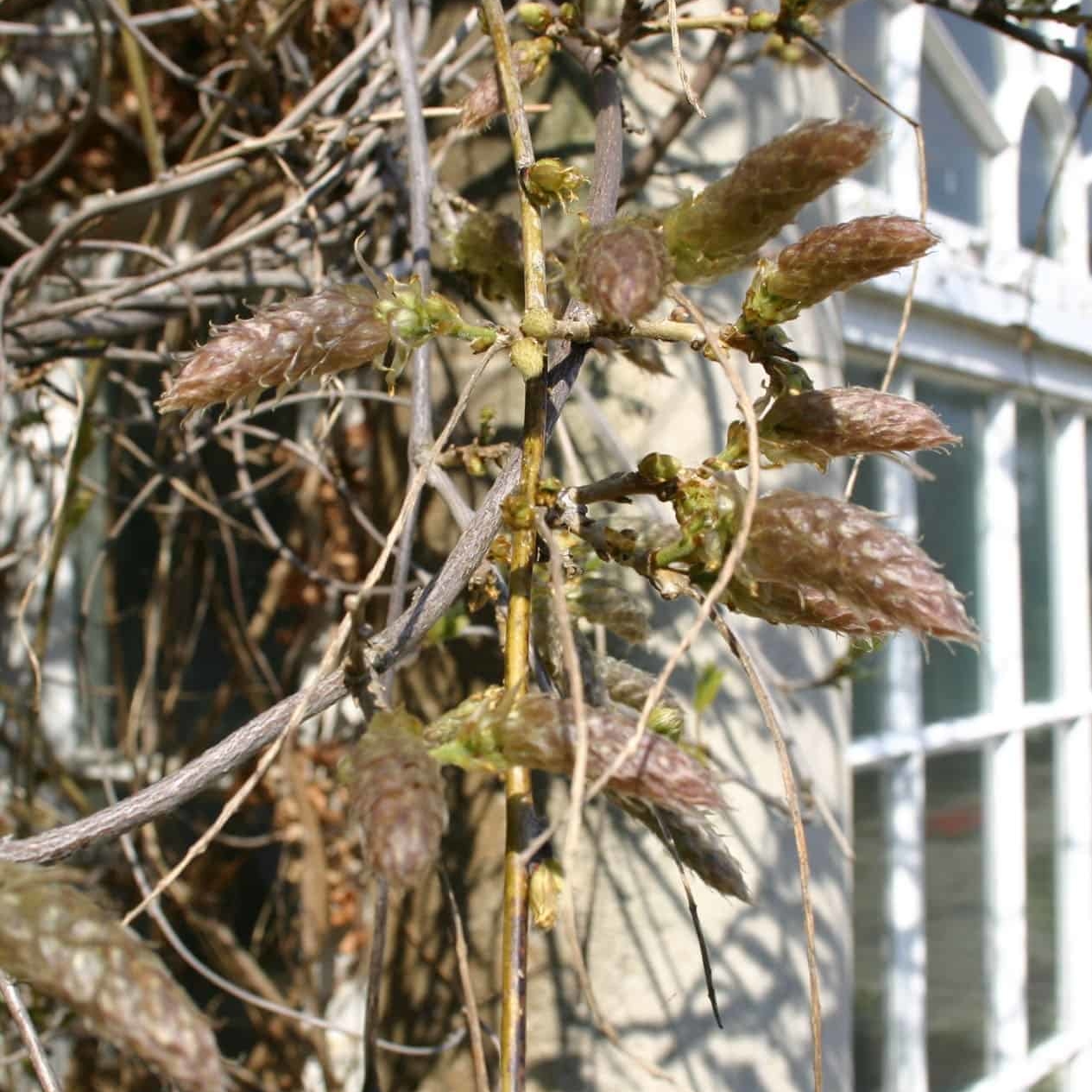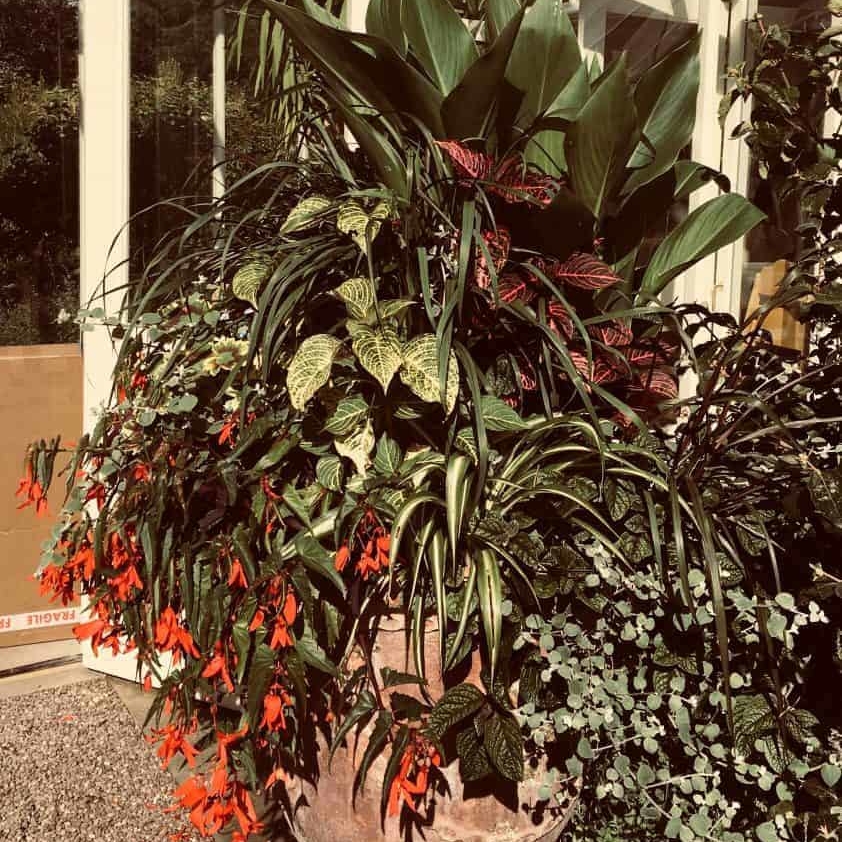The mere mention of Japanese knotweed strikes terror into the hearts of many. Fallopia japonica was imported by the Victorians, apparently to assist in their industrial endeavours, but causes horticultural headaches and construction nightmares for us modern Brits.
An invasive non-native species
Where those in the 19th Century thought it would stabilise railway embankments, we’ve discovered it gets everywhere and will break through even the sturdiest of materials. Asphalt and deep burial are no barrier to this invader. Building foundations and drains are susceptible to damage.
The good news about Japanese knotweed is that it rarely sets seed in the UK climate. Of course, the huge downside is that it can grow from even the smallest piece of rhizome – its modified underground stems. This means that, if you attempt removal and forget even a fragment, your problem won’t have gone away. The chances of missing some rhizome increases when you consider they can extend up to three metres below the surface and spread seven metres from the original shoot. Japanese knotweed spreads at a rate of more than a metre (roughly one yard) per week.
Japanese knotweed can tower up to three metres in height, dominating its surroundings. Even when invisible, its rhizomes can remain dormant yet viable for up to 20 years. As soon as the ground is disturbed, away they go, wreaking havoc on what had become a controlled plot.
Legal implications
As you may expect, such a tricky plant carries some serious legal implications.
Since 2013, anyone selling a property or land with Japanese knotweed present must declare this via a TA6 form, which can be found here.
Additionally, the government amended the Anti-social Behaviour, Crime and Policing Act 2014 to cover issues around Fallopia japonica. You can legally grow the plant on your own property, but you must control its spread. If it has a ‘detrimental effect of a persistent or continuing nature on the quality of life of those in the locality’, the owner could be prosecuted. As with other harmful or invasive weeds, perpetrators (wise or unaware alike) could pay fines of up to £5000 or face a 2-year prison sentence for its spread into the wild.
In light of this, the prospect of keeping the plant on your property seems far from ideal. So what can we do?
Poison, bury or burn
According to a 2017 ProLandscaper article on Japanese knotweed, 69% of people believe Japanese knotweed can’t be removed. This simply isn’t true. Firstly, several options are available to you for DIY removal:
- Use approved herbicides: Check out this government webpage for further details. However, this route can take up to three years and cost you dearly in the long run. Furthermore, rhizomes will be dormant, not destroyed.
- Burn it: A much more drastic course of action. You need to check your local council allows private garden fires. Also, the crowns and rhizomes can survive flames, so there’s still no guarantee of success. This then necessitates careful disposal of remains (see below).
- Bury it: Plants need to be buried at least 5m deep and covered with/wrapped in a root barrier membrane layer. Bury it alone, and on approved sites only.
Call in the professionals
Registered, approved organisations exist nationwide for expert removal of Japanese knotweed from your property, and this is by far the wisest option. It’s less hassle for you, and more effective than DIY measures. What’s more, use of professionals ensures you an insurance-backed guarantee. This is vital if you plan to sell your property on. It’s also equally important if you’re having disputes with neighbours based on the presence of knotweed.
If you’re seeking a mortgage, many lenders will only give one for a property with a KMP (Knotweed Management Plan) in place through a recognised eradication firm.
An agency such as Japanese Knotweed Ltd or Environet will use trained, registered carriers and deposit waste in approved sites. Looking in-depth at the latter company, they offer three different forms of eradication. The most efficient is Dual Action Residential Treatment, entailing herbicide treatments in summer and physical excavation during winter dormancy. The process has a 10-year insurance-backed guarantee. If further regrowth occurs, the company will provide further treatment free of charge.
You can visit the PCA Invasive Weed Control Group website to find a register of vetted consultants and contractors.
Hopefully this article has helped you become untangled from the troublesome Japanese knotweed!
Image : By MdE (page at dewiki | page at commons) – own photo, CC BY-SA 3.0 de, https://commons.wikimedia.org/w/index.php?curid=3506558
Kevin Gelder
Kevin joined Bestall & Co in late 2017 and brought a range of skills with him from a varied background. He gained a degree in French and Italian from Lancaster University in 2009 before successfully completing a PGCE at the University of Sheffield in 2011. He built on his communication skills through secondary language teaching, before working in healthcare administration.
Ultimately though it was his passion for plants and gardening which brought him to Bestall & Co as a member of the planting team, and although he's now moved back to an office based role, the articles he wrote whilst he was still with us live on.



